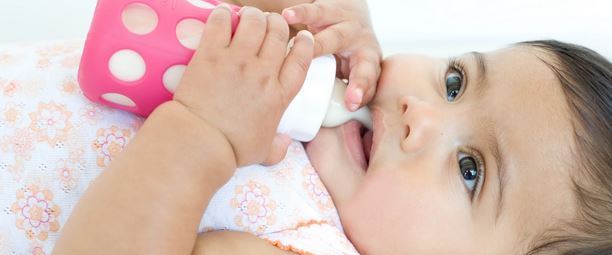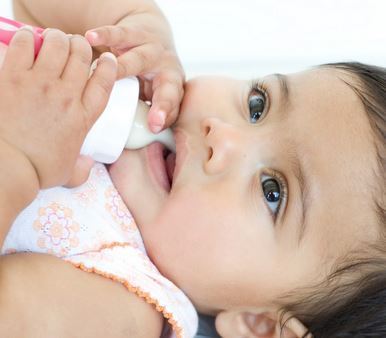Ultimately your baby will decide which bottle you use. The first test is to see which nipple he'll take most easily. Once you determine that, you can select the bottles and bottle accessories you need.
Choosing the right nipples
You can choose latex, silicone, or rubber nipples. Latex nipples are softer and more flexible, but they don't last as long. Silicone nipples are firmer and hold their shape longer.
You have a choice in nipple shape, too — traditional, orthodontic, or flat-topped nipples. Orthodontic nipples, designed to accommodate your child's palate and gums, have a bulb that's flat on the side that rests on your child's tongue. Flat-topped nipples emulate the shape of a mother's breast.
Nipples are also available in a range of sizes and flow speeds. You may have to try a few sizes to find one that works best for your child, but don't give an infant a nipple meant for a toddler. Because you can't know beforehand which type or size nipple your child will prefer, it's best to play it safe and buy one of several types. Once you've determined your child's preference, you can purchase enough to last for months.

When to replace nipples?
Formula should drip steadily out of a nipple. If it pours out in a stream, the hole is too big and the nipple should be replaced. Check nipples periodically for signs of wear, such as discoloration or thinning, and replace worn ones, which could break and become a choking hazard.
Age range: If you're bottle-feeding a newborn, buy the smallest size in a variety of types, and let your baby determine which nipple works best. If you're weaning and switching to bottles, be sure to buy the right nipple for your child's age.
Bottom line: It may be a better value to buy nipples along with bottles in starter sets — but it's smarter to first buy a variety of nipples and determine which type your child prefers. Once you know your child's favorite, buy that style in bulk. Nipples cost about $2 to $4 each.
Twenty years ago, there was one type of bottle. Now you can choose between right-angled bottles that let less air into the nipple, streamlined bottles that your baby can hold himself, and a variety of disposable bottles. You also can choose between plastic and glass.
Plastic bottles are unbreakable but they do deteriorate, so you need to replace them regularly. Glass bottles may do a better job of retaining the nutrients in formula — and they never need to be replaced as long as they don't break, chip, or crack.
Are plastic bottles safe?
Plastic baby bottles are made from one of two different compounds: polyethylene (also known as EVA plastics) and polycarbonate. Recent tests indicate that a chemical called bisphenol-A may leach from polycarbonate plastic into baby formula when a bottle containing formula is heated for 20 to 30 minutes at 100 degrees centigrade (212 degrees Fahrenheit).
The major manufacturers of baby bottles maintain that testing bottles by boiling formula in them doesn't give an accurate measure of how much bisphenol-A leaches from the plastic during normal use, because no one should ever boil formula before giving it to a baby. Manufacturers also argue that babies have been fed from polycarbonate bottles for more than 30 years with no evidence that any child has been harmed. Both the U.S. Food and Drug Administration and the Juvenile Product Manufacturers' Association say that bottles warmed to room temperature are safe for your child.
What should you do?
First, don't store formula in plastic bottles. Pour it into the bottle just before your child drinks it and discard any left over. Second, follow the FDA's suggestion and don't overheat bottles with formula in them. If you'd rather not use polycarbonate bottles, you have options: glass bottles and disposable nursers with throwaway liners contain no bisphenol-A.
Age range: For newborns, buy a half-dozen 4-ounce bottles to start. Shift to 8- or 9-ounce bottles at about 4 months — but save the smaller ones as backups.
Bottom line: Bottles range from about $1 to $8 each. Inexpensive bottles don't give you a choice of nipple. More expensive bottles may be angled or include special vacuum valves so your baby swallows less air. Disposable systems typically cost between $16 and $25.
